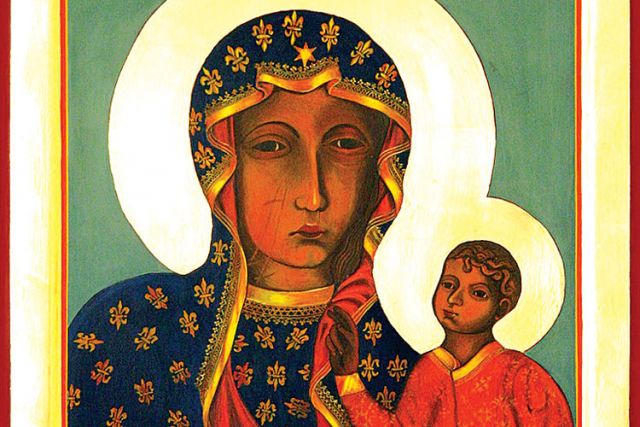Polish Heritage Day at the Royal Ontario Museum April 5 will highlight the work of Polish-Canadian artists — painters, dancers, writers, musicians and fabric artists.
“We’ve played a part in the development of Canada and our multicultural fabric,” said Polish Canadian Congress national president Teresa Berezowski. “It’s very, very faith based. It’s an important part of our community.”
Eight icons by Polish-Canadian iconographer Janusz Charczuk will be central to the ROM display, including his own version of the Black Madonna of Częstochowa.
For most Poles the famous image of a shadowy, raven-haired Madonna with two scars on her face from an attack by Hussite bandits in 1430 is simply part of their identity, said Charczuk.
“When you show the picture of the Black Madonna to any Pole, he or she will recognize it right away. I remember as far back as when I was a young boy that image was always on the wall. We grew up with her. She is just special,” the artist said.
Crowned the queen and protectress of Poland in 1656, the legends around the Black Madonna include her ability to repel armies from Polish territory — even Russia’s Red Army in 1920.
Icons are a unifying art form, common to both Orthodox and Catholics and predating any split in the Church, said Charczuk. Polish icons are a way of seeing Polish history as a part of Christian history.
From the very traditional Black Madonna, which legend has it was first painted on the wood of the Holy Family’s kitchen table (science has it as a late Medieval painting) to contemporary Polish culture, icons carry the story of Poles even into Canada in the 21st century. Charczuk will also show an icon he calls Kashubian Cross. The icon honours the first Polish settlers in Canada, Kashubs who came to Ottawa in the 1850s.
“It’s my design and my tribute to them — this people and their love of Virgin Mary and at the same time their love of (Pope) John Paul II.
Polish descendents of the Kashub settlers from Wilno, Ont., will be on hand to display their traditional embroidery. Lech Grazyna Gelezowski’s photos of Polish churches throughout Western Canada will trace the history of Polish settlement. Concerts organized by Polish musicians, Polish sculpture, book signings by Polish-Canadian authors and children’s craft activities organized by the Polish Scouting Association of Canada will all be part of the day.
More information is available at www.rom.on.ca.

